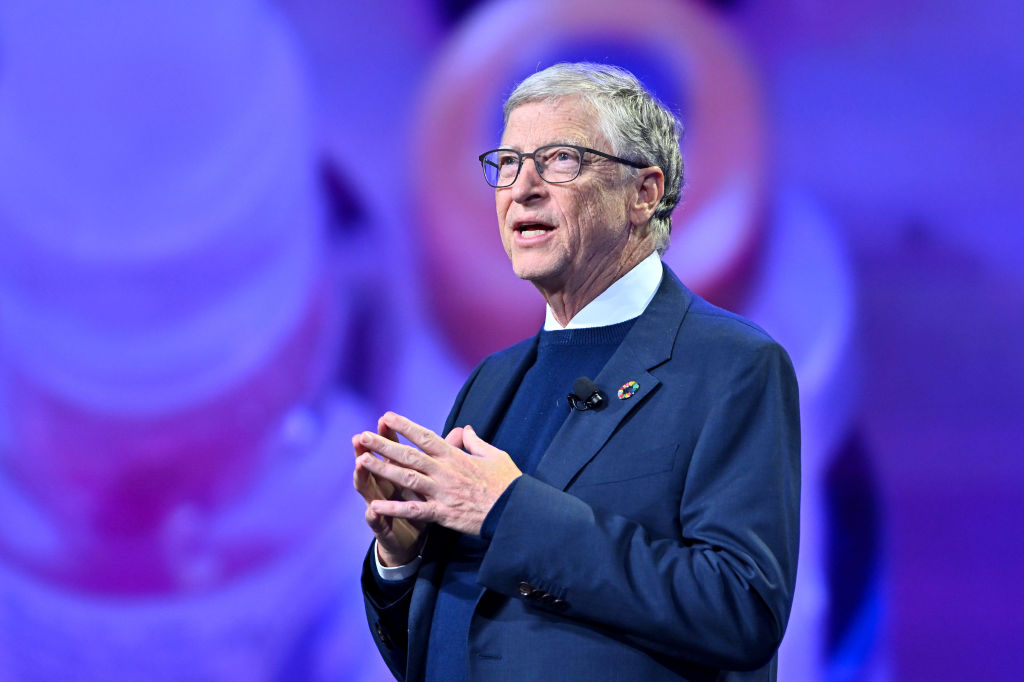What is Bill Gates' net worth?
We explore Bill Gates’ net worth, how the Microsoft co-founder became a tech mogul and his billions donated to charity


Oojal Dhanjal
He may be one of the richest people in the world, but Bill Gates’ net worth isn’t as high as it could be – and for good reason. The Microsoft co-founder has donated tens of billions to charity through the Bill & Melinda Gates Foundation.
Gates and his friend Paul Allen founded Microsoft in 1975 at the dawn of the personal computer revolution. They struck gold with the software, turning Microsoft into one of the most influential tech companies.
Though Gates has stepped back from Microsoft’s day-to-day operations, he left an indelible mark on the industry and has turned to more charitable causes.
MoneyWeek
Subscribe to MoneyWeek today and get your first six magazine issues absolutely FREE

Sign up to Money Morning
Don't miss the latest investment and personal finances news, market analysis, plus money-saving tips with our free twice-daily newsletter
Don't miss the latest investment and personal finances news, market analysis, plus money-saving tips with our free twice-daily newsletter
Still, his stake in Microsoft, along with other investments, places his net worth at a whopping $159 billion, according to the Bloomberg Billionaire Index, making him the world’s eighth richest person.
He often drops in and out of the top ten richest people in the world. Taking the reins above him are Elon Musk, Jeff Bezos, Mark Zuckerberg, Larry Ellison and Bernard Arnault.
We look at how Bill Gates managed to build his fortune and the factors that contribute to his net wealth today.
How Bill Gates founded Microsoft
Bill Gates is widely regarded as one of the most successful entrepreneurs in modern history. Gates was born in Seattle, Washington, in 1955. As a youngster, he showed an interest in technology and computers, even though the industry was still in its early stages.
By the age of 13, he’d taught himself how to program his first computer and went on to attend Harvard University. Despite making it into the prestigious university, Gates dropped out after two years to pursue his passion – computers and technology.
Gates co-founded Microsoft in 1975 with his childhood friend, Paul Allen, and they initially focused on producing software for personal computers.
Their big breakthrough came in 1980. That year, Microsoft signed a deal with IBM to provide the operating system for its new line of personal computers, MS-DOS – a game-changer for Microsoft. It cemented the firm’s position as a major player in the emerging computer industry.
Over the next five years, with the cash from IBM flowing in, Microsoft continued to innovate and expand its product offerings. The first version of Windows, which would become its flagship operating system for personal computers was put on sale in 1985.
In the years that followed, Microsoft released a series of highly successful products, including Microsoft Office, Internet Explorer and the Xbox gaming console.
The story behind Bill Gates’ net worth
In 1987, Gates became the world’s youngest self-made billionaire with a net worth of $1.25 billion, according to the Forbes 400 Richest People in America list.
After finding Microsoft, Gates made his first big splurge on a Porsche 911 in 1979, he said on The Ellen DeGeneres Show.
Bill Gates was the world's richest person for several years in a row during the 1990s and early 2000s.
Bill Gates donated his Microsoft shares worth billions to the Gates Foundation trust in 2022. This means Gates now holds around 1% of Microsoft shares, which were worth over $40 billion as of August 2024, according to Investopedia. Adam Levy of The Motley Fool notes that if he had kept his 45% stake from the 1986 IPO listing, he would be worth eight times more today – which would have made him a trillionaire.
Gates has other investments that keep him atop the rich lists. He is the brain behind several companies including BEN, TerraPower and Gates Ventures.
A recent analysis by Business Insider breaks down some of his extensive wealth. Bill Gates launched a $1 billion investment fund Breakthrough Energy in 2016 to invest in the clean energy revolution.
With the help of his private investment firm Cascade, he has made several high-profile investments, such as partial ownership of the Charles Hotel in Cambridge, Massachusetts. Through it, he also owns the biggest private farmland in the US, which stretches across 275,000 acres, and has had a stake in the Canadian National Railway since 2013.
His property portfolio is just as vast as his wealth – Gates owns at least 12 parcels of land spanning about 10.5 acres in Medina, Washington, called Xanadu 2.0. The estate is home to a 60-foot pool, a $30 million 16th-century Leonardo da Vinci manuscript, and several famous paintings such as Winslow Homer’s Lost on the Grand Banks, which he purchased for $36 million in 1988.
Aside from Xanadu 2.0, he also has a 20-acre estate in Florida valued at around $35 million, which he bought to support his daughter Jennifer Gates Nassar’s passion for equestrianism.
Gates also owns several private jets, and his luxury car collection includes around 23 vehicles, including a Porsche 959.
How Bill Gates donates his wealth
Gates has vowed to give away most of his wealth through the Giving Pledge, which he launched in 2010 with his ex-wife Melinda French Gates and Warren Buffet.
The former couple founded the Bill & Melinda Gates Foundation to improve healthcare and fight poverty around the world. According to Forbes, Gates has donated at least $35.8 billion of his Microsoft stake to the foundation, while Buffet has contributed more than $36 billion to it since 2006.
In 2016, Gates invested in Amyris, a synthetic biotechnology company for the development of antimalarial medicine. However, the company filed for bankruptcy in 2023. Gates invested $50 million into Alzheimer’s research in 2017, and another £30 million the next year into the Diagnostics Accelerator.
Other than that, Gates and his ex-wife also pledged $2 billion to fight malaria, more than $50 million against Ebola, and $38 million for a low-cost polio vaccine.
During the Covid-19 pandemic, the Bill & Melinda Gates Foundation announced a $1.6 billion investment of five years for the international organisation Gavi to deliver lifesaving vaccines to the world’s poorest countries.
An avid traveller, Gates spends his time learning about innovations in different countries. He visited India for Anant Ambani’s pre-wedding bash, where he met with India’s prime minister Narendra Modi about how his foundation can support technology and innovation in India.
The entrepreneur has also announced that he will be publishing a memoir, Source Code, this year, which is set to come out in February. It will give readers an insight into his life as a young entrepreneur in his twenties before he was in the public eye.
Get the latest financial news, insights and expert analysis from our award-winning MoneyWeek team, to help you understand what really matters when it comes to your finances.
Jacob is an entrepreneur, hedge-fund expert and the founder and CEO of ValueWalk.
What started as a hobby in 2011 morphed into a well-known financial media empire focusing in particular on simplifying the opaque world of the hedge fund.
Before devoting all his time to ValueWalk, Jacob worked as an equity analyst specialising in mid- and small-cap stocks. Jacob also worked in business development for hedge funds.
He lives with his wife and five children in New Jersey.
Jacob only invests in broad-based ETFs and mutual funds to avoid any conflict of interest that could arise from buying individual stocks.
- Oojal DhanjalEditorial Content Producer
-
 High earners face £15k income hit by 2029 following Autumn Budget
High earners face £15k income hit by 2029 following Autumn BudgetRachel Reeves’s Autumn Budget means high earners – or HENRYs – are now looking at an income hit running into the thousands. Can you avoid it?
-
 Millions underestimate how many paydays are left until retirement - why you should be counting your payslips
Millions underestimate how many paydays are left until retirement - why you should be counting your payslipsKeeping track of how long you will be earning a salary for can help work out how much you need to put into a workplace pension
